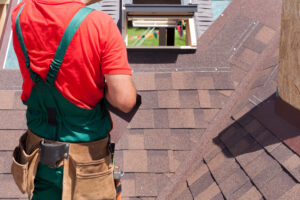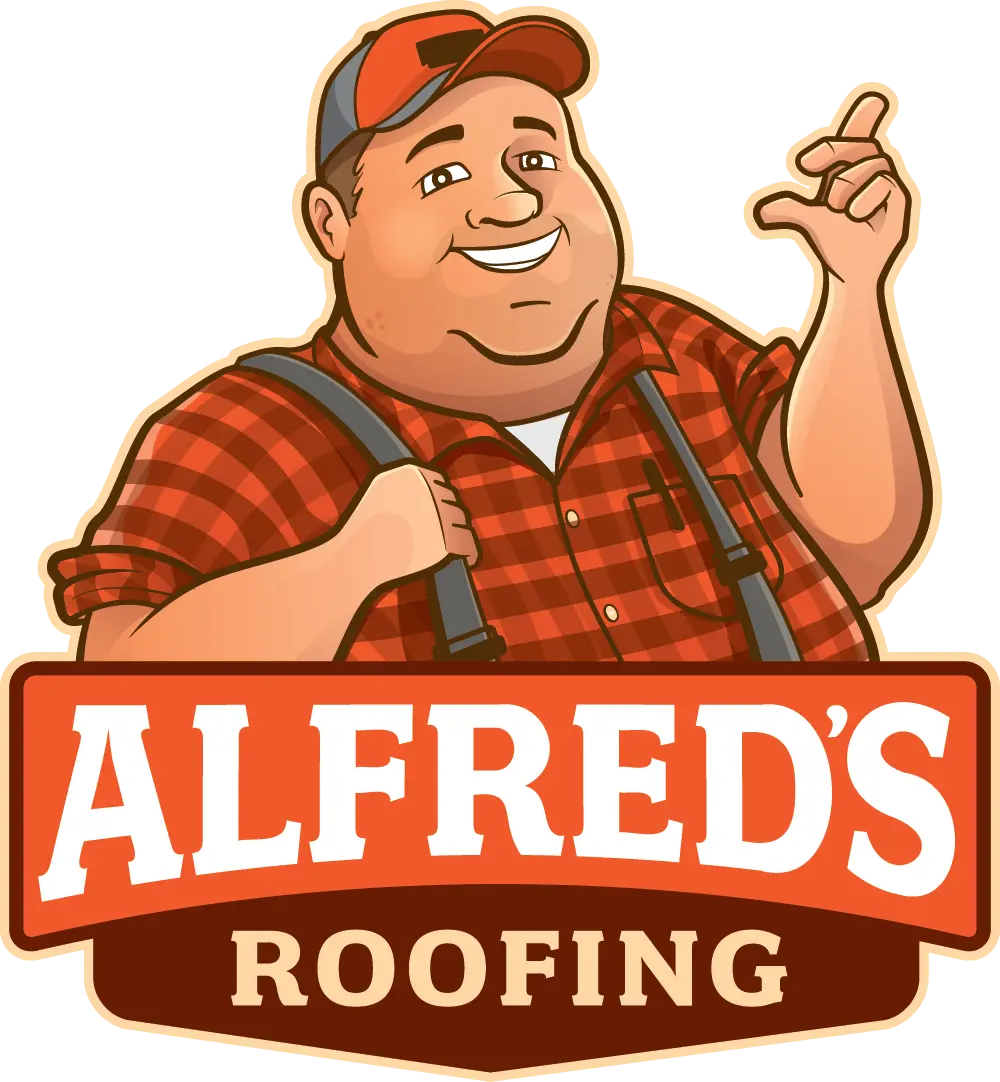Introduction
Knowing how often to replace my roof is vital for protecting your home and ensuring your family’s safety. Right up front, let’s answer the question:
- Asphalt Shingle Roofs: 15-30 years
- Metal Roofs: 20-50 years
- Tile Roofs: 50+ years
- Slate Roofs: 100+ years
The lifespan of your roof varies based on the materials used, the quality of installation, and how well it’s maintained. Factors such as harsh weather, water damage, and poor ventilation can shorten a roof’s life dramatically.
Keeping an eye on your roof’s condition through regular maintenance checks will help you identify issues early on and save you money in the long run.

Signs It’s Time to Replace Your Roof
Knowing when to replace your roof can save you from costly repairs and potential damage to your home. Here are the key signs to look out for:
Buckled and Curled Shingles
Shingles should lie flat against the roof. If they are curling or buckling, it’s a clear sign of wear and tear. Shingles that curl or buckle can no longer protect your roof effectively, leading to water damage. You might also notice shingle granules in your gutters, another sign that your roof is nearing the end of its life.
Rusted Roof Valleys
Roof valleys are the V-shaped metal channels that help rain and snow flow into the gutters. If these valleys are rusted, water can seep into your home. Rusted valleys are a serious issue and usually indicate that your roof needs replacement.
Missing Shingles or Tiles
Missing shingles or tiles leave your roof vulnerable to water intrusion. Whether it’s due to a storm or just old age, missing components should be replaced immediately. If you find multiple missing shingles or tiles, it might be time for a new roof.
Gaps in Chimney Flashing
Flashing around chimneys, vents, and skylights is crucial for preventing leaks. Over time, cement or tar flashing can crack or break, while metal flashing lasts longer. If you notice gaps or cracks in the flashing, it’s a sign that your roof needs attention.
Daylight Through Roof Boards
Take a trip to your attic and inspect the roof deck. If you see daylight coming through the roof boards, it means water can also get in. This is a clear sign that your roof has significant issues and needs replacing.
Sagging and Moss
A sagging roof indicates structural issues, often due to moisture trapped in the roof. Moss, mold, and fungi growth are also signs that your roof is retaining moisture. Over time, this can lead to rotting boards and a weakened roof structure, necessitating a replacement.
Keeping these signs in mind will help you identify when it’s time to replace your roof and avoid more severe damage to your home. Regular inspections and maintenance are key to extending the life of your roof.
Next, let’s dive into how often you should replace your roof based on the material used.

How Often to Replace My Roof Based on Material
Different roofing materials have varying lifespans. Knowing how often to replace your roof depends largely on the type of material used. Here’s a breakdown to help you understand the longevity of various roofing materials.
Asphalt Shingle Roofs
Asphalt shingles are one of the most common roofing materials in the U.S. They come in two main types: 3-tab shingles and architectural shingles.
- 3-tab shingles typically last between 15 to 20 years. These are the simpler, flat shingles often used in budget-conscious projects.
- Architectural shingles, also known as dimensional shingles, are more durable and aesthetically pleasing. They can last between 20 to 30 years.
Regular maintenance and prompt repairs can help extend the life of asphalt shingles, but eventually, they will need to be replaced due to granule loss and weathering.
Metal Roofs
Metal roofs are known for their durability and long lifespan. There are two common types: standing seam metal roofs and metal shingles.
- Standing seam metal roofs can last between 30 to 50 years. These roofs feature interlocking panels that provide excellent protection against the elements.
- Metal shingles offer a similar lifespan, typically ranging from 20 to 50 years depending on the quality of the material and installation.
Metal roofs are resistant to fire, insects, and rot, making them a long-lasting option for homeowners.
Wood Shingle and Shake Roofs
Wood shingles and wood shakes add a rustic charm to homes but require more maintenance than other materials.
- Wood shingles usually last between 25 to 30 years with proper care.
- Wood shakes, being thicker, can last slightly longer, between 30 to 40 years.
Regular inspections and treatments for insects and rot are essential to maximize the lifespan of wood roofs.
Tile Roofs
Tile roofs are made from materials like clay or concrete and are known for their longevity and durability.
- Clay tiles and Spanish tiles can last between 40 to 50 years.
- The underlayment, a crucial component of tile roofs, may need replacement every 20 to 30 years to ensure continued protection.
Tile roofs are heavy and may require additional structural support, but they offer excellent durability and a long lifespan.
Slate Roofs
Slate roofs are among the longest-lasting roofing materials available.
- Slate tiles can last 100 years or more with proper maintenance.
These roofs are incredibly durable and resistant to weathering, making them an excellent investment for long-term home protection.
Understanding the lifespan of different roofing materials can help you plan for replacements and avoid unexpected costs. Next, we’ll explore the factors that affect roof longevity.
Factors Affecting Roof Longevity
Several factors can influence how often you need to replace your roof. Understanding these elements can help you maintain your roof and extend its lifespan.
Installation Quality
The quality of your roof installation is crucial. Poor installation can lead to leaks, water damage, and other issues that shorten the roof’s lifespan. Here are key aspects to consider:
- Existing shingles: If new shingles are installed over old ones, the roof may not last as long.
- Sub-roof condition: The layer beneath the shingles should be in good shape to ensure longevity.
- Professional installation: Always hire experienced contractors to avoid common pitfalls. Poor installation can lead to a myriad of problems down the road.
Local Climate and Weather Conditions
Your local climate plays a significant role in how often you need to replace your roof. Different weather conditions can affect roofing materials:
- Sun exposure: Constant sun can cause shingles to become brittle.
- Tree debris: Falling branches and leaves can damage shingles and clog gutters.
- Storms and hurricanes: Severe weather can lead to missing shingles and leaks.
- Thermal shock: Rapid temperature changes can cause materials to expand and contract, leading to cracks.
Attic Ventilation
Proper attic ventilation is essential for maintaining a healthy roof. Poor ventilation can lead to a range of issues:
- Attic insulation: Proper insulation helps regulate temperature and prevents ice dams.
- Ventilation systems: Ensure your attic has adequate ventilation to avoid moisture buildup.
- Temperature regulation: Good ventilation helps keep your roof at a stable temperature, reducing the risk of damage.
Regular Maintenance
Regular maintenance is key to extending the life of your roof. Neglecting minor issues can lead to major problems:
- Spot checks: Regularly inspect your roof for signs of damage.
- Professional inspections: Hire professionals for annual inspections to catch issues early.
- Preventive maintenance: Address minor problems before they escalate.
- Debris removal: Keep your roof and gutters free from leaves and other debris.
- Algae and moss prevention: Regular cleaning can prevent the growth of algae and moss, which can damage shingles.
By paying attention to these factors, you can significantly extend the lifespan of your roof. Next, we’ll answer some frequently asked questions about roof replacement.

Frequently Asked Questions about Roof Replacement
How do you know it’s time to replace your roof?
Knowing when to replace your roof can save you from bigger problems down the road. Here are some clear signs:
- Water Damage: If you notice water stains on your ceilings or walls, it means your roof is leaking. This can lead to serious structural damage if not addressed promptly.
- Moisture Marks: Dark spots or streaks on your walls or ceilings are a sign of moisture intrusion. This often indicates that your roof’s waterproofing is compromised.
- Peeling Paint: Paint that’s peeling or blistering on the exterior of your home can be a sign of moisture trapped in your roof’s structure.
- Damp Rafters: Check your attic. If the rafters feel damp or you see water stains, your roof might be leaking.
- Leaks: The most obvious sign is water dripping from your ceiling. Even small leaks can lead to big problems over time.
What is the typical life expectancy of a roof?
The lifespan of a roof depends on the materials used and the local climate. Here’s a general guide:
- Asphalt Shingles: These are the most common roofing material. 3-tab shingles typically last 15-20 years, while architectural shingles can last 20-30 years.
- Metal Roofs: Durable and long-lasting, metal roofs can last 20-50 years depending on the type and quality of the metal.
- Wood Shingles and Shakes: With proper maintenance, wood shingles can last 25-30 years, and wood shakes can last 35-40 years.
- Tile Roofs: Clay and concrete tiles are very durable and can last 40-50 years, though the underlayment might need replacement sooner.
- Slate Roofs: Slate is incredibly durable, often lasting 100 years or more.
How often should you replace an asphalt shingle roof?
The frequency of asphalt shingle roof replacement depends on the type of shingles used:
- 3-tab shingles: These typically need replacement every 15-20 years. They are thinner and less durable, making them more susceptible to weather damage.
- Architectural shingles: These are thicker and more durable, often lasting 20-30 years. They also offer better aesthetic appeal and can withstand harsher weather conditions.
Regular inspections and maintenance can help extend the life of your asphalt shingle roof. Keep an eye out for signs of wear and tear, and consult a professional if you’re unsure about the condition of your roof.
Next, we’ll explore other common questions about roof replacement.
Conclusion
A roof replacement is a significant investment but one that pays off in many ways. A well-maintained, sturdy roof protects your home from the elements, enhances curb appeal, and can even boost your home’s value. Knowing how often to replace your roof depends on several factors, including the type of roofing material, the quality of installation, and the local climate.
At Alfred’s Roofing, we understand the importance of a reliable roof. Our team is dedicated to providing professional inspections and high-quality roof replacements to ensure your home stays safe and beautiful. We pride ourselves on customer satisfaction, offering lifetime warranties and efficient service to meet your needs.
Why Choose Alfred’s Roofing?
- Professional Inspections: Regular inspections can catch issues early, saving you time and money. Our certified team conducts thorough inspections and provides honest assessments.
- Customer Satisfaction: We aim to exceed your expectations with every project. Our clients trust us for our commitment to quality and transparency.
- Lifetime Warranties: We use only the best materials and offer lifetime warranties to give you peace of mind.
- Efficient Service: Our team works efficiently to minimize disruption to your daily life while ensuring top-notch results.
If you suspect it might be time to replace your roof, or if you’re unsure about its current condition, don’t hesitate to reach out to us. Schedule a professional inspection today and let us help you make an informed decision.
Contact Alfred’s Roofing for a roof replacement estimate and take the first step towards a safer, more beautiful home.

